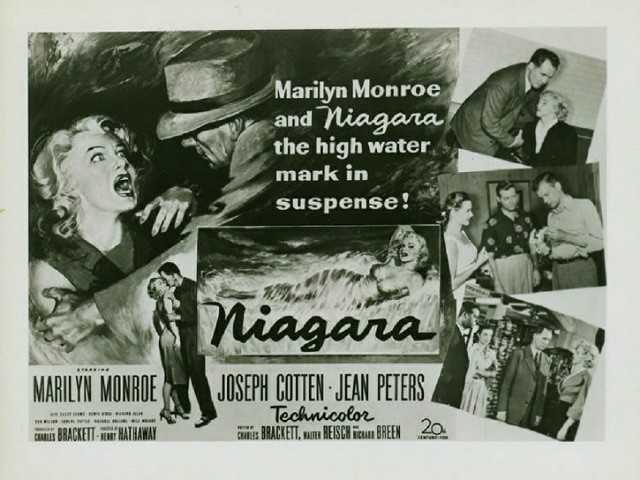
Niagara will be the second film screened in a double bill at the Redford Theatre in Detroit on September 21, starting with Trapped (1949) at 2 pm. It’s part of a weekend-long festival, ‘Noir in the 50s‘, hosted by Noir City magazine.
Marilyn Monroe 1926-1962

Niagara will be the second film screened in a double bill at the Redford Theatre in Detroit on September 21, starting with Trapped (1949) at 2 pm. It’s part of a weekend-long festival, ‘Noir in the 50s‘, hosted by Noir City magazine.
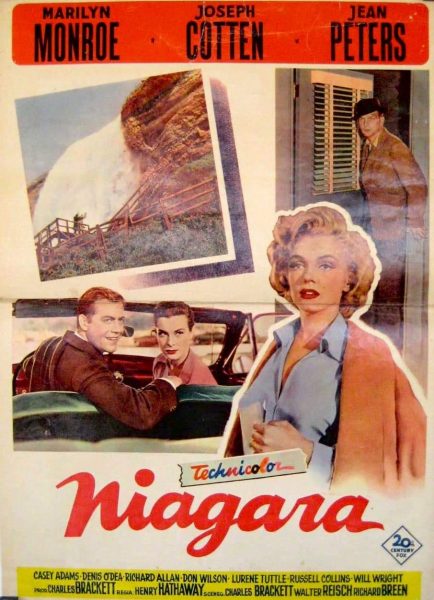
Niagara was released in the U.S. 66 years ago, on January 21, 1953. Despite its success at the box-office, Marilyn would never play such a villainous role again. But while Niagara is now considered an important film noir – in the genre’s latter phase, and one of the few made in Technicolor – the Hollywood Reporter‘s original review, reposted here, was one of the first to recognise Marilyn’s dramatic achievement.
Thanks to A Passion for Marilyn
“Around the scenic splendor of Niagara Falls, Charles Brackett has produced and co-scripted a gripping murder melodrama that is loaded with sex and suspense. With Marilyn Monroe, Joseph Cotten and Jean Peters turning in superb performances that help maintain a mood of dynamic tension, Niagara should pile up huge grosses for 20th-Fox.
Henry Hathaway makes wonderful use of the falls to heighten the suspense and to add pictorial beauty to the production which gains additional exploitation value by its locale, never before used as the focus for a motion picture plot. Those who have never been to Niagara will be fascinated by the exciting shots of the falls, the awesome grandeur of which has been thrillingly captured by Joe MacDonald’s fine photography.
Hathaway draws splendid performances from his cast and maintains a taut, spicy tempo that grips the attention consistently. Miss Monroe turns in her finest acting performance yet, adding to her acting laurels by playing a sexy tart with a provocative abandon that has a powerful impact … Sol Kaplan’s music, directed by Lionel Newman, helps heighten the mood of suspense, with other technical functions on the high-quality level one expects from 20th-Fox productions.”
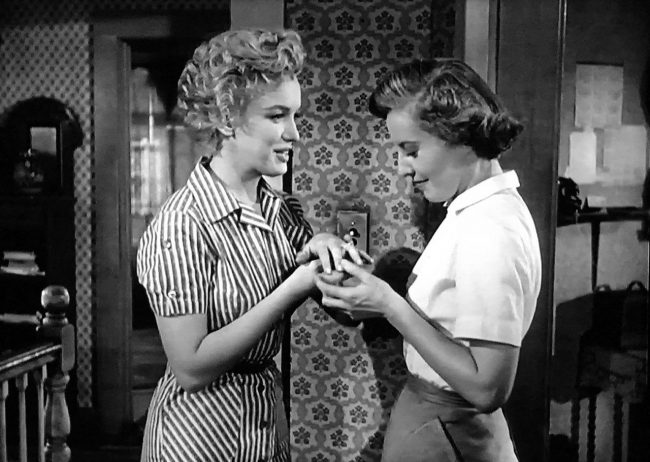
Over at Vulture, film critic Angelica Jade Bastien names Fritz Lang’s Clash By Night (1952) in a list of ’10 Female-Led Noirs’. Some might argue that Clash isn’t a classic noir, as it’s not set in a major city and no serious crimes are committed – but for me, its gritty treatment of post-war discontent, and repressed sexuality and simmering violence place it firmly in the canon. (I would argue that Don’t Bother to Knock and Niagara also partially qualify, thanks to Marilyn’s gripping scenes with Anne Bancroft and Jean Peters, respectively.)
“What happens when the woman people view you as isn’t who you really are, nor who you want to be? Clash by Night poses this question by beginning where most noir ends. Mae Doyle (Stanwyck) has grown accustomed to a decadent life, but is forced to return to her hometown of Monterey, California, after that life falls apart. Soon, Mae settles into a life in which she’s uncomfortable, navigating marrying a gruff fisherman (Paul Douglas) and having a daughter quickly after. She finds herself drawn to the far more exciting, equally restless Earl (noir stalwart Robert Ryan). Clash by Night is a domestic noir bolstered by its rich insight into the ways women feel confined by society, as well as by its amazing direction by the legendary Fritz Lang and its performances, including a magnetic supporting turn by Marilyn Monroe. But it’s Stanwyck’s performance as a woman of temerity who is far too bold and yearning for the prosaic existence she finds herself trapped within that earns it a spot on this list.”
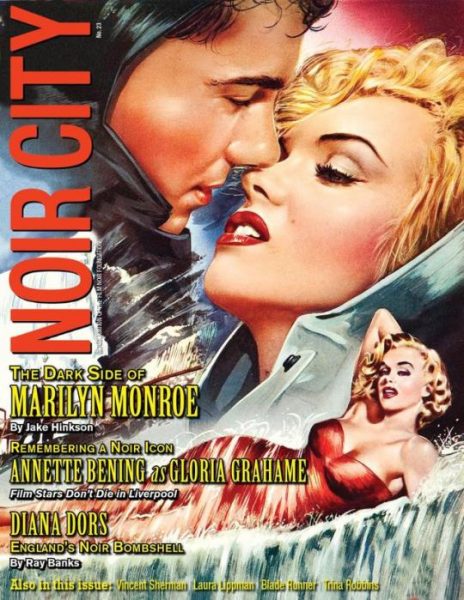
Marilyn is the latest cover girl for Noir City, a digital quarterly published by the Film Noir Foundation. Inside, there’s an eight-page illustrated article, with Jake Hinkson analysing her diverse roles in The Asphalt Jungle, Clash by Night, Don’t Bother to Knock and Niagara. Fellow bombshells Diana Dors and Gloria Grahame are also profiled in this issue. To subscribe to Noir City, join their mailing list and donate $20 or more to the foundation, who host regular screenings across the US and a yearly film festival, and also publish an annual print round-up of the best features.

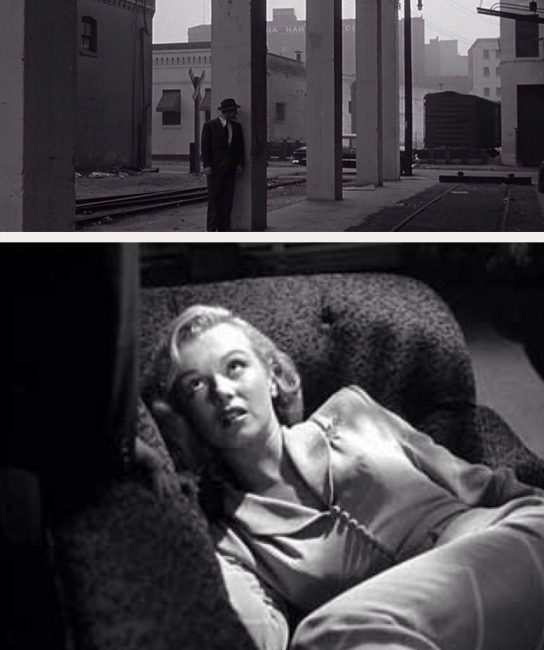
‘Is The Asphalt Jungle the greatest Cincinnati movie ever?’ Jason Gargano asks in an article for City Beat. Although Marilyn’s scenes were filmed on the MGM lot in Hollywood (as was most of the movie, apart from the opening shots), she also gets honourable mention for putting the Queen City on the movie map. (Although MM appears not to have visited Cincinnati in real life, Sugar Kane – her character in Some Like It Hot – mentions a prior stint in a Cincinnati band.)
“The Asphalt Jungle is not exclusively the domain of men; it also possesses the screen debut of Marilyn Monroe, who plays Alonzo’s mistress, Angela. [John] Huston introduces Monroe, who lies lazily on a couch, with a carefully staged shot in which Alonzo (Louis Calhern) gazes down at her from above. Angela’s demeanor and visage are pure Monroe — innocence mixed with seduction.
Monroe only has a few scenes, little more than five minutes total, but her presence, much like the brief establishing shots of various Cincinnati cityscapes, leaves a distinctive impression in a movie full of them.”
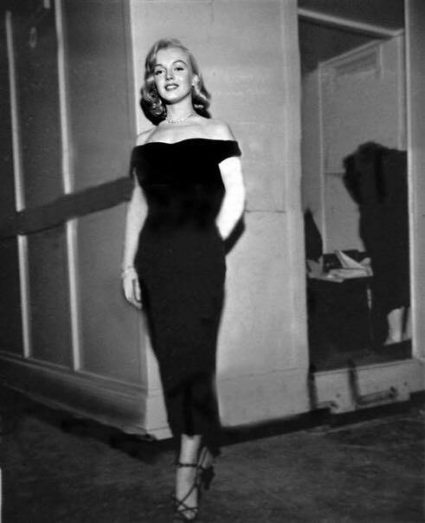
One of Marilyn’s finest early films, The Asphalt Jungle, will be screened at 11am this Sunday, October 29 at Harkins 16 Multiplex, as part of the 2nd annual Flagstaff Film Noir Festival, presented by movie historian Foster Hirsch in Arizona. Tickets cost $10 per film, or $60 for an eight-film pass.
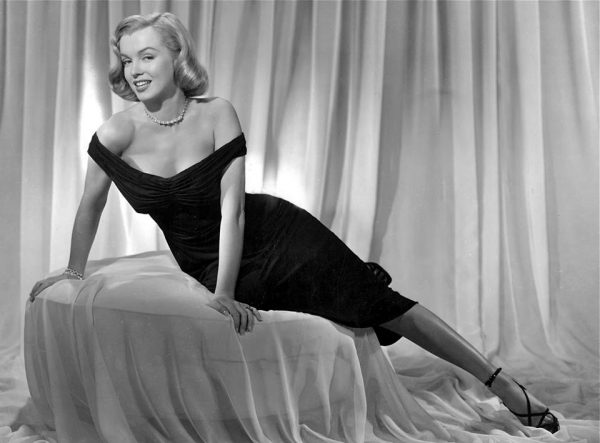
Film historian and ‘Noirchaeologist’ Eddie Muller has placed The Asphalt Jungle – John Huston’s 1950 heist movie, which gave Marilyn her first important role – fourth in his list of ’25 noir films that will stand the test of time’ (ahead of The Maltese Falcon and Double Indemnity), reports Open Culture.
“‘I wouldn’t cross the street to see garbage like that,’ said the head of the studio that made this [Louis B. Mayer at MGM], the granddaddy of all caper films. A pure ‘crime’ film, with every character indelible.”
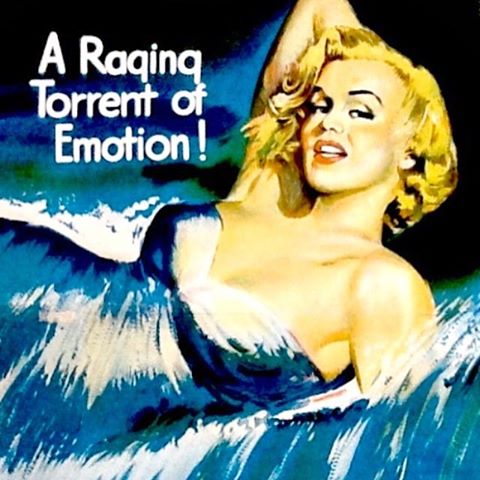
Niagara will be screened on February 22 at the Glasgow Film Theatre, as part of Dangerous Dames, a season celebrating the women of film noir. Admission is free, but must be booked in advance. (Incidentally, another vintage poster for Niagara adorns the cover of The Red and the Black: American Film Noir in the 1950s, a new book by Robert Miklitsch.)

The Red and the Black: American Film Noir in the 1950s by Robert Miklitsch has just been published by the University of Illinois Press. As the cover art shows, Niagara is one of the movies featured in the book.
“Critical wisdom has it that we said a long goodbye to film noir in the 1950s. Robert Miklitsch begs to differ. Pursuing leads down the back streets and alleyways of cultural history, The Red and the Black proposes that the received rise-and-fall narrative about the genre radically undervalues the formal and thematic complexity of ’50s noir and the dynamic segue it effected between the spectacular expressionism of ’40s noir and early, modernist neo-noir.
Mixing scholarship with a fan’s devotion to the crooked roads of critique, Miklitsch autopsies marquee films like D.O.A., Niagara, and Kiss Me Deadly plus a number of lesser-known classics. Throughout, he addresses the social and technological factors that dealt deuce after deuce to the genre–its celebrated style threatened by new media and technologies such as TV and 3-D, color and widescreen, its born losers replaced like zombies by All-American heroes, the nation rocked by the red menace and nightmares of nuclear annihilation. But against all odds, the author argues, inventive filmmakers continued to make formally daring and socially compelling pictures that remain surprisingly, startlingly alive. Cutting-edge and entertaining, The Red and the Black reconsiders a lost period in the history of American movies.”
A new Life magazine special, LIFE Film Noir: 75 Years of the Greatest Crime Films, has just been released, and one of the movies showcased within its pages is Niagara. The text is provided by novelist J.I.Baker, author of The Empty Glass and a previous Life special, The Loves of Marilyn. While his writings on the personal lives of the stars tend to be speculative in the extreme, he’s on firmer ground with the movies they made.
In this short feature, he also quotes another novelist, Megan Abbott, who describes Niagara as “sleazy, gorgeous and mesmerising,” noting that Marilyn “takes full advantage of her character’s complications and desperation.”
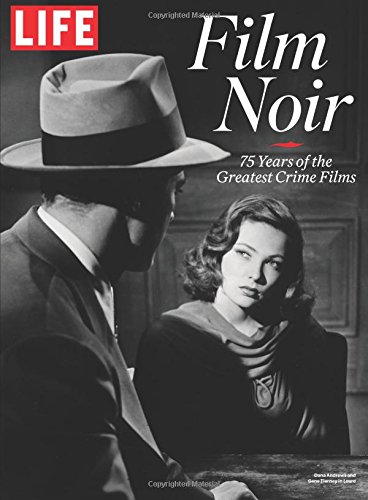
“Though sometimes overshadowed by her later turns in musicals, comedies and ‘serious’ dramas,” Baker observes, “MM made an early indelible mark in film noir,” citing her riveting performances in The Asphalt Jungle, Clash by Night and Don’t Bother to Knock. (Incidentally, The Asphalt Jungle is featured in another recent publication on film noir, Mark Vieira’s Into the Dark – although Marilyn is not mentioned specifically there.)
If you love old Hollywood and film noir, this magazine is a must-have. You can order it now from Amazon (UK price £9.99, or $13.99 in the US.)